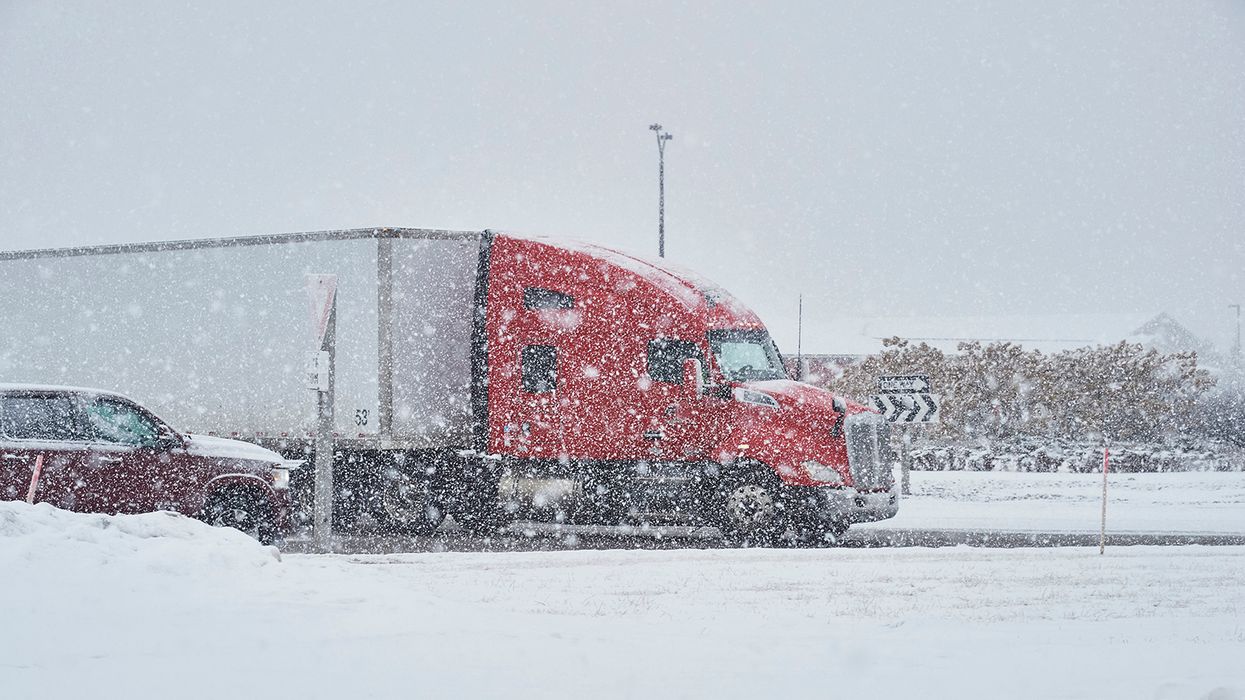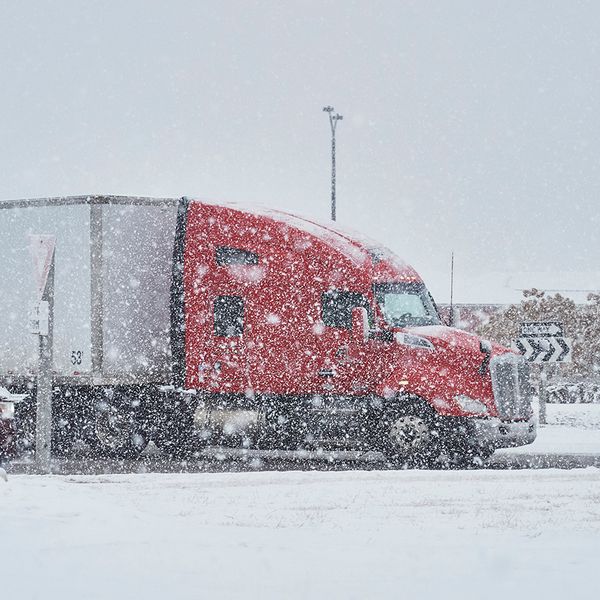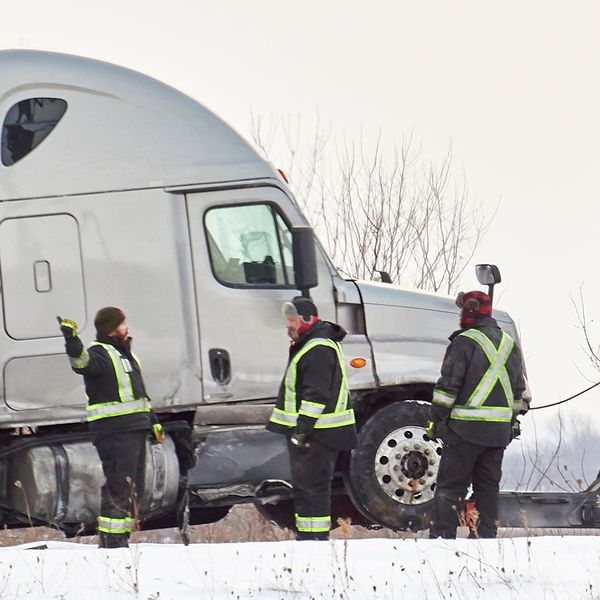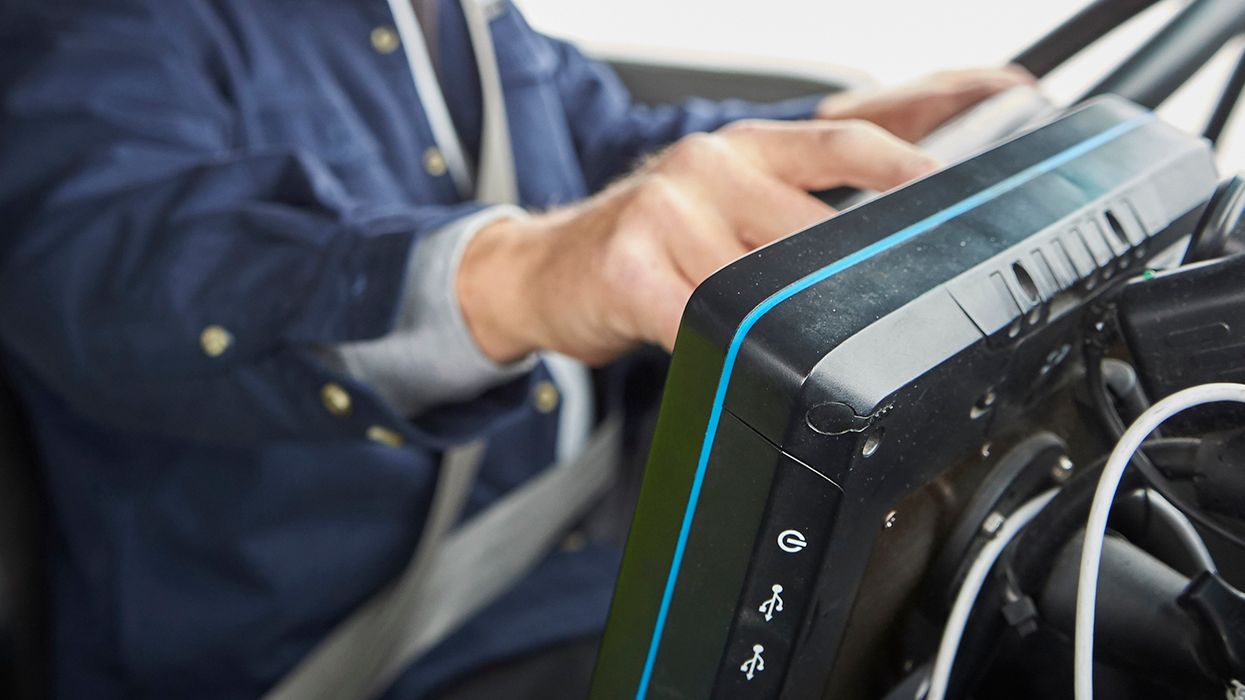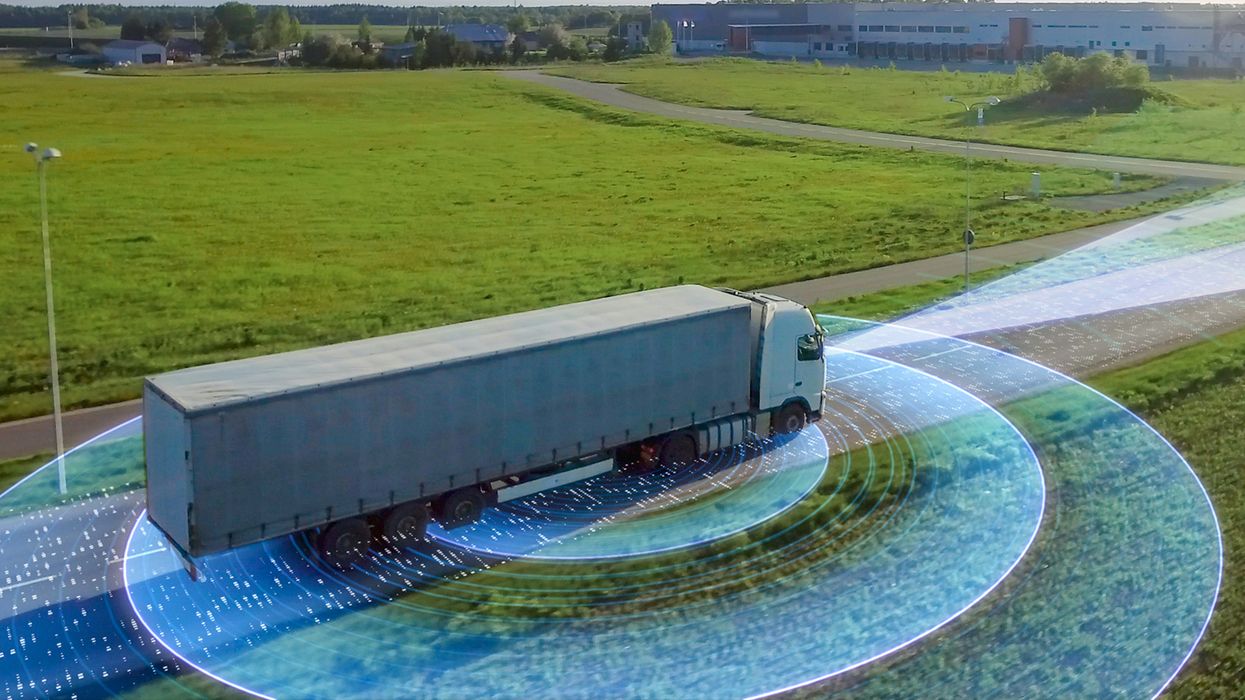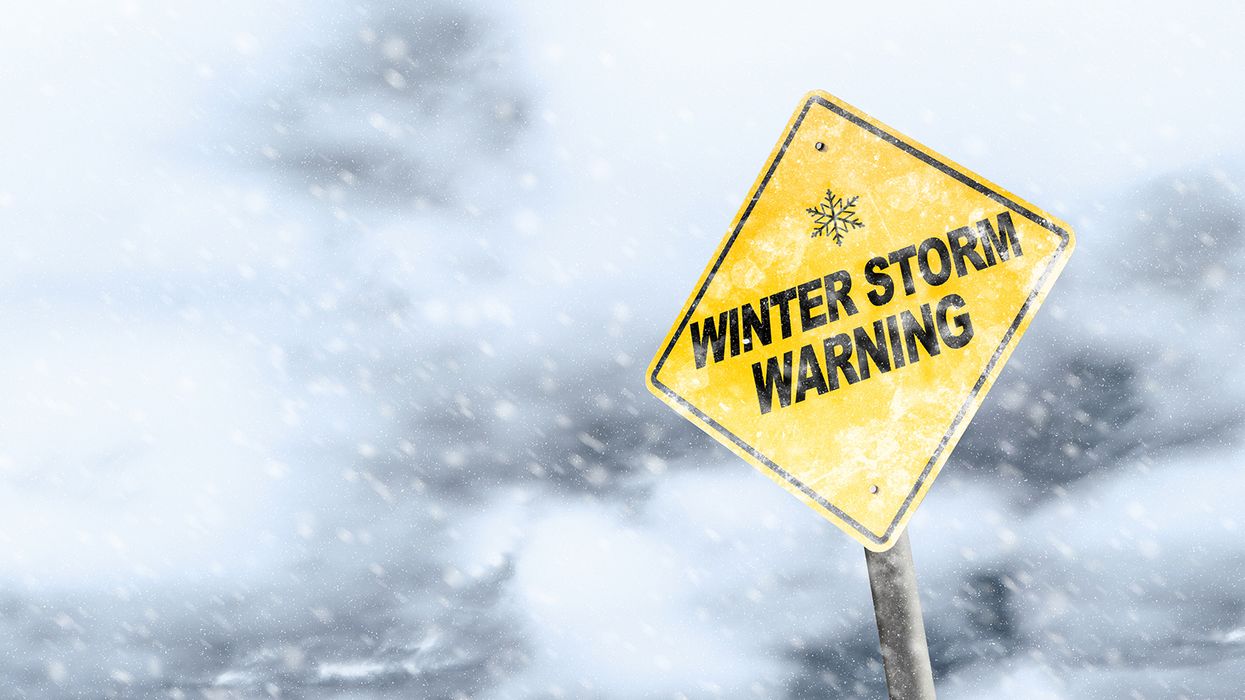Canadian winter means driving habit changes
There’s no other way to put it: winter driving in Canada can be a scary experience, which means adjustments to winter weather driving. Most areas will see lots of snow and ice on the roads at least until April and in some regions, it is not uncommon to see winter weather into late May. Each province has its own set of winter driving conditions and hazards, including whether winter tires or chains are mandatory. For example, winter tires or chains are compulsory in parts of British Columbia from October 1 to April 30, and in Quebec from December 15 to March 15, each year. While not compulsory in other provinces, they are still permitted, for example in Ontario from October 1 to April 30.
Rapid changes in elevation and weather can make highway conditions unpredictable during winter months. Drivers may start a trip in sunny California with a load that’s going to Regina, Saskatchewan, for example, and end up facing stretches of slush, ice, heavy snowfall, or compact snow along the way. Driving on snowy, icy roads during a Canadian winter is all but guaranteed at some point. Your drivers may not be equipped with the skills or knowledge of how to drive in icy conditions. But we’ve got you covered with a few simple but significant winter driving tips. Whether you’re in the blustery Maritimes provinces, frigid Prairies, or temperate Greater Toronto Area or Vancouver areas, these tips can help keep you safe as you navigate through our cold Canadian climate.
Most of us are accustomed to driving our typical passenger vehicles in inclement weather, remembering to operate at a slower speed, and keeping a longer following distance as a general rule of thumb. These tips have probably been ingrained in us since we began driving and have been put to use in our experiences on the roadway. However, driving in these same inclement conditions while operating a commercial motor vehicle (CMV) is a completely different story, meaning there are different tips CMV drivers must follow. Due to a CMV’s heavyweight and overall size and frame, operators must abide by different rules than regular drivers to ensure the safety of others on the road, as well as their own.
Watching your speed
The first and arguably most important tip for driving in inclement weather is to slow down. The posted speed limits we all see standing proudly at the side of the roads were determined by traffic engineers and safety experts. There are provincial guidelines set out to determine what speed limit works best for a given segment of roadway. What we all need to remember is these speed limits are for ideal conditions. In other words, a road with a posted speed limit of 80 km/h should be safe at those speeds when the road surface is dry and clean with daytime light conditions and normal traffic density. Change any one of those conditions and the recommended speed should decrease. Add a wet road surface, poor visibility or heavy traffic and motorists should be thinking about reducing their speed to suit those less-than-ideal conditions. Throw snow and ice into that scenario and speeds need to be reduced significantly. On a road with snow, your vehicle’s tires will only provide you with around 10 percent of the grip you could expect on dry pavement.
Watching your following distance
Since most commercial vehicles are heavier and larger, it’s reasonable to say that they take longer to stop than typical passenger vehicles. Maintaining a safe following distance can be the deciding factor in whether or not a crash occurs, so be sure to follow safely. Industry best practices recommend that semi-drivers keep a following distance of one second for every 10 feet of vehicle length, however, this recommendation doubles when there is inclement weather. If a passenger vehicle is to spin out or lose control ahead, the CMV driver must recognize and respond to this by slowing down and maintaining a safe distance.
Watching your signs and signals
In winter weather conditions, please turn on your headlights. It’s important that other drivers on the road see you, especially in foggy and snow-falling conditions. If you need to change lanes or merge off the road, make sure to use your turn signals, i.e., blinkers. As a general rule, wait three “blinks” of your blinkers before moving over in dry or rainy weather. Wait four or five “blinks,” then move over slowly when the weather is more inclement and visibility is more difficult. Inadequate surveillance can often be the cause of a crash, so make sure you’re checking your mirrors often and looking far enough ahead before turning on your blinkers to begin changing lanes.
If you’re operating at a significantly slower speed than others around you, make sure to put on your hazard lights so others can see you and know it’s okay to pass if necessary.
Watching the space around you
Although sometimes hard to avoid on multiple-lane highways and interstates, CMV drivers should do their best to refrain from boxing in or “sandwiching” a passenger vehicle between themselves and another semi. The passenger vehicle is subject to many vulnerabilities in this position which gives them little to no opportunity to react in the event of an unexpected merge or if either CMV hits high winds or ice.
Watching for windy conditions on your route
If the weather reaches a point where you are uncomfortable operating your truck or semi, or you encounter ice, slow your vehicle down and look for the nearest exit ramp or rest area. It’s far more important to wait out weather conditions than it is to continue on and risk your life and the lives of others.
Key to remember: While driving in inclement weather can be dangerous for all drivers, this is especially true for drivers operating commercial motor vehicles. The special rules and regulations that exist for semi-drivers are to ensure the safety of everyone on the road. Please follow them during the coming winter months.

